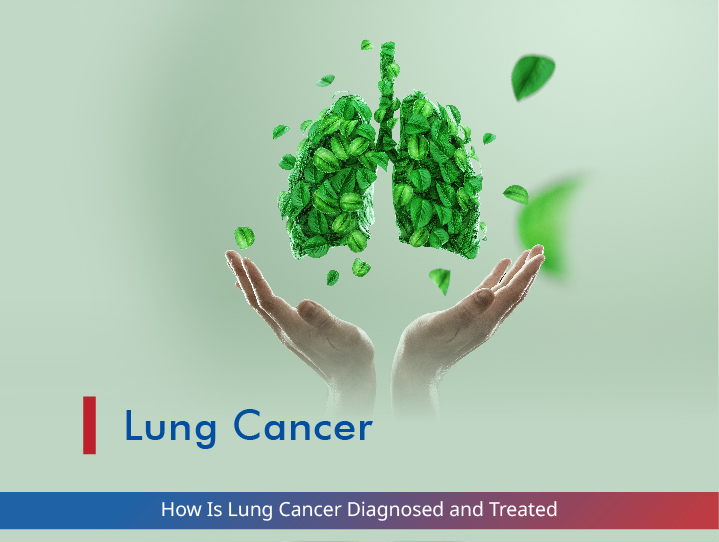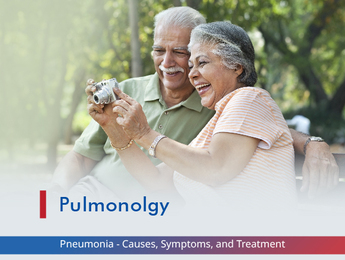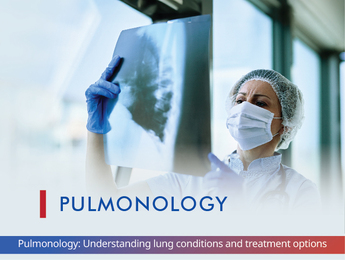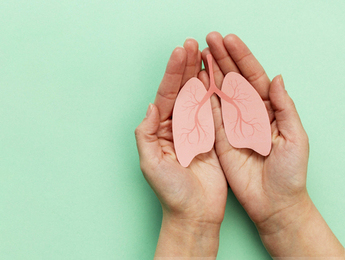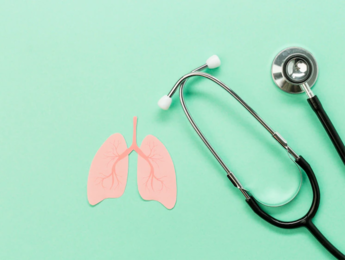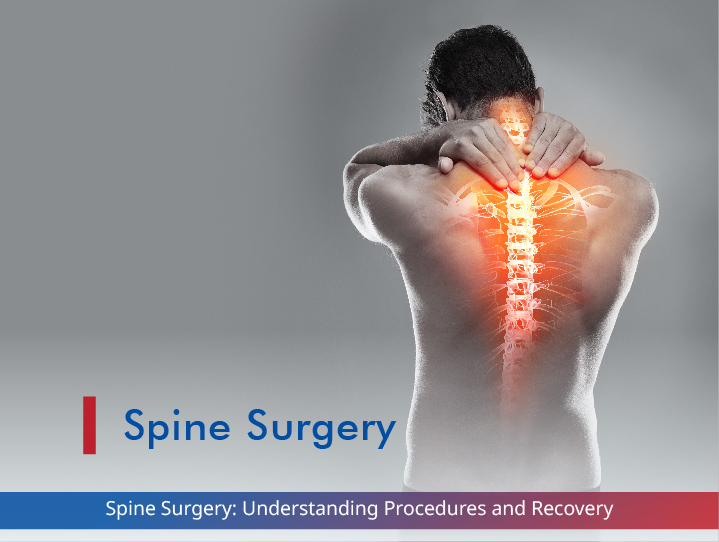Lung cancer contributes to 6.9% of all new cancer cases and 9.3% of all cancer-related deaths in India. It is the most common cancer type and cause of cancer-related mortality. Smoking is the main cause of this cancer. Both smokers and people who are exposed to secondhand smoke have an increased risk of developing this cancer. However, this cancer can be treated with therapies, surgery, or drugs.
What Is Lung Cancer?
The cancer of your lungs is referred to as lung cancer. Your lungs are two sponge-like organs in your chest, responsible for taking oxygen when you inhale and releasing carbon dioxide when you exhale.
Types of Lung Cancer
Lung cancer is classified into two types based on the appearance of cancer cells under the microscope, which are:
- Small Cell Lung Cancer – It contributes to 10 to 15% of all lung cancers and occurs mostly in heavy smokers. It can be cured with radiation therapy and chemotherapy.
- Non-Small Cell Lung Cancer – It contributes to 80 to 85% of all lung cancers, has various subtypes including large cell carcinoma, adenocarcinoma, and squamous cell carcinoma.
What Are the Symptoms of Lung Cancer?
These symptoms indicate that you may have lung cancer:
- Loss of appetite
- Weight loss
- Persistent cough
- Chest pain
- Headache
- Bone pain
- Coughing up blood
- Hoarseness
- Wheezing
- Shortness of breath
- Fatigue and weakness
- Recurrent respiratory infections such as bronchitis or pneumonia
How Is Lung Cancer Diagnosed?
Annual lung cancer screening that uses low-dose CT scans is recommended for people who are heavy smokers or have quit smoking in the past 15 years. Your doctor may suspect lung cancer if your routine physical exam reveals:
- Dullness when the chest is tapped
- Swollen lymph nodes above the collarbone
- Swelling of the face
- Weak breathing
- Expanded veins in the neck, arms, or chest
- Unequal pupils
- Droopy eyelids
- Abnormal sounds in the lungs
- Weakness in one arm
Also, they may perform the following tests to diagnose your condition:
Imaging Tests
An X-ray may be taken to see if your lungs have any abnormal nodule or mass. A CT scan may be recommended following an X-ray to check for small lesions in your lungs.
Sputum Cytology
If you produce sputum when you cough, looking at the sputum under the microscope can determine whether cancer cells are present.
Biopsy (Tissue Sample)
A sample of cancerous cells is taken from your body to examine them more closely. Your doctor may take the sample in several ways, including:
-
Bronchoscopy
This procedure is performed under sedation. Your doctor examines abnormal areas of your lungs with a lighted tube that is passed down your throat into your lungs for removing a tiny tissue sample.
-
Mediastinoscopy
General anaesthesia is used during the procedure. Your doctor will make a small incision at the base of your neck and they will insert surgical tools behind your breast bones to take tissue samples.
-
Needle Biopsy
Using CT or X-ray images, your doctor will insert a needle through your chest wall and into the abnormal lung tissue to collect the sample.
The collected tissue samples will be sent for analysis and the test results will help to determine whether you have lung cancer.
Other Tests to Determine How Far the Cancer Has Spread
If you are diagnosed with lung cancer, your doctor will perform other tests to determine the stage of your cancer so that they can decide the appropriate treatment for you.
Imaging procedures are performed to determine the extent of your cancer and whether it has spread to other parts of your body, including MRI, CT, bone, PET (positron emission tomography) scans.
How Is Lung Cancer Treated?
Your doctor will suggest any of the following lung cancer treatment depending on your health, preferences, and the type and stage of your cancer.
Surgery
During surgery, your doctor will remove the affected lung and a margin of healthy tissue. Different procedures are performed to remove the affected lung, including:
- Lobectomy – Removes the entire lobe of one lung
- Wedge Resection – Removes a small section of the lung that contains cancer cells and a margin of healthy tissue
- Pneumonectomy – Removes an entire lung
- Segmental Resection – Removes a larger portion of the lung that contains cancer cells
Radiation Therapy
It uses high-energy beams to kill cancer cells. Your doctor may recommend this lung treatment before or after surgery if your cancer is advanced or spread to other parts of the body. It is mostly combined with chemotherapy treatment if surgery is not an option for you.
Chemotherapy
It uses drugs to kill cancer cells. Your doctor might provide you drugs for lung cancer treatment intravenously or orally. A combination of drugs is given for weeks or months, with breaks in between so that you can recover. This treatment of lung cancer might be recommended after surgery to remove any remaining cancer cells, but it can also be performed before surgery to shrink cancer cells, making them easy to remove. It can be performed alone or combined with radiation therapy.
Stereotactic Body Radiotherapy
It is otherwise called radiosurgery, an intense radiation treatment that sends many beams of radiation from different angles to cancer cells. This treatment is recommended for people with small lung cancer or whose cancer has spread to other parts of the body. Radiosurgery is completed in one or a few sessions depending on the extent of your cancer.
Targeted Drug Therapy
It is focused on treating specific abnormalities present in the cancer cells, causing them to die. Your cancer cells are tested in a lab to check whether these drugs can help you.
Immunotherapy
This treatment involves artificial stimulation of the immune system to treat lung cancer. This treatment improves the natural ability of the immune system to fight the disease. It is recommended to treat advanced lung cancer or cancer that has spread to other parts of the body.
Is Lung Cancer Curable?
For the past 10 years, the survival of lung cancer has increased from 11 months to 5 years (17.8%), which is due to the availability of the latest treatments and medications. If detected earlier, lung cancer cure rate can be increased.


